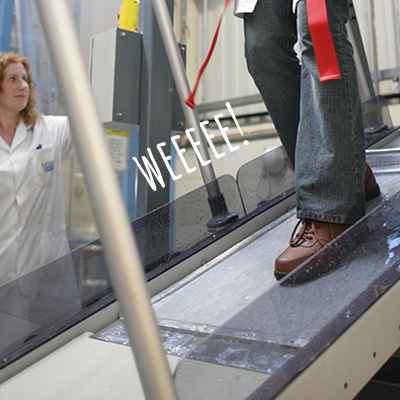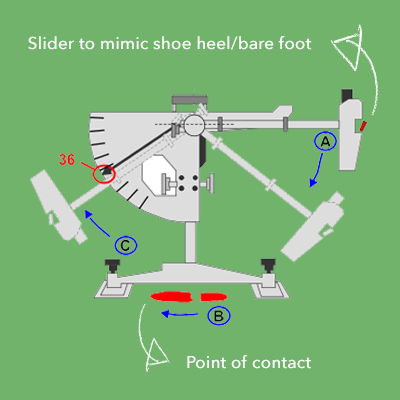We might always put your best foot forward with our low cost carpet tiles and vinyl flooring but we always have your back when it comes to safety regulations too.
If you don't do anything else today, make reading this blog post the one productive thing you can tick off your to-do list because knowing what makes a safety floor a safety floor is super super important.
What is a safety floor?
A safety floor is a type of floor covering that has been designed to reduce slipping and hence improve safety measures wherever it is installed by meeting stringent specification requirements. More often than not, safety floors are made using vinyl and is kind of like the sensible sibling of luxury vinyl flooring which doesn't provide any notable slip resistance of enhanced safety, it's just there to look pretty.
You will typically find safety vinyl flooring in places like gyms, around swimming pools, in changing rooms, in wet rooms, in care homes, in school play areas and often behind bars (the drinking kind, not the prison kind - although that could work too). Basically anywhere where water can end up on the floor and cause slipping a hazard.
It is kind of like the sensible sibling of luxury vinyl flooring (LVT) which doesn't provide any notable slip resistance or enhanced safety, it's just there to look pretty really as an affordable alternative to traditional hard wood flooring.
The Ramp Test vs. the Pendulum Test
What you need to be uber wary of is that there are slip resistant floors and then there are safety floors - they're two totally separate things and its important to differentiate between the two. Slip resistant floors will have an R rating after being subjected to the Ramp Test but a safety floor will have passed the EN 13845 Pendulum Test. You can find these details in the product specifications but for now, let's look at the difference between the two tests.
The Ramp Test (pictured below, left) is NOT indicative of a safety floor. Sure, it measures the point at which a flooring product becomes slippy but an R rating doesn't make something a safety floor. No, sir. This test is a German standard test but does perform to British Standard BS 4592.
The product is attached to a ramp while a willing (and totally professional) participant is hoisted above the ramp wearing industry standard work boots (DIN 51130) or bare feet (DIN 51097). Oil or soapy water is then applied to the product while the ramp is adjusted to varying degrees. The R rating is then awarded depending on when the person began to slip with R9 being the most slippy and R13 being the least.
 The Ramp Test in action
The Ramp Test in action
 How the Pendulum Test works
How the Pendulum Test works
If you're after a bonafide safety floor solution that is going to cover all health and safety requirements then it's the Pendulum Test (pictured above, right) you're going to be looking out for.
This will be shown on the product specifications as EN 13845 and may very well come complete with an R rating too but for a floor to be classed as 'safe', it needs to be showing a score of 36 or above next to that Pendulum test. So how does the Pendulum Test work you ask...
Well a clever piece of (portable) machinery is kitted out with a slider which is swung down onto the flooring in question below in a pendulum motion (funnily enough), usually in wet conditions. The slider is designed to mimic a human foot step and establish the slip potential of the flooring product by obtaining Pendulum Test Values (PVT)or Slip Resistance Values (SRV). As I mentioned above, this value needs to reach 36 or more to be classed as safety floor suitable.
Safety floors will always contain little pieces of quartz, glass particles or raised nodules to improve the dynamic coefficient of friction (CoF) and grip. Great examples of safety floor available here at DCTUK are Polyflor Polysafe Standard Vinyl, Polyflor Polysafe Vogue Ultra, Altro Walkway Vinyl and Altro Wood Safety Vinyl.
I hope you're feeling a little more clued up on what makes a safety floor a safety floor now because you could be up you know where without a paddle if you get it wrong. Do your good deed for the day and share this post via social media so everybody else can benefit from our pearls of flooring wisdom!